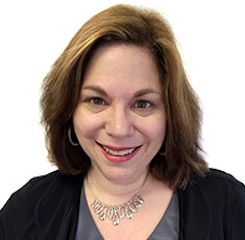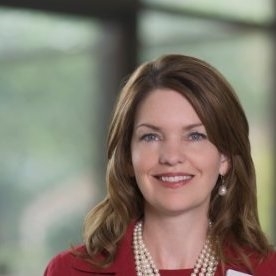
When I first read about Geisinger Health System’s plans to recruit 1,500 top-level healthcare workers from across the nation to fill new and vacant positions throughout the entire organization, I was overwhelmed on behalf of its human resource staff.
I know how difficult it can be to hire one editor who can write about healthcare. But I could only imagine how challenging it would be to find 1,500 of the nation’s best doctors, nurses, support staff and advanced practitioners given the competitive market and shortage of physicians and nurses--while trying to retain the ones you have.
So I asked Julene Campion, Geisinger’s vice president of talent management, about the organization’s plans to fill the jobs as the nation’s talent pool gets smaller and smaller. Its approach, she says, goes beyond job postings and help wanted ads. It centers on building relationships.

“It’s an old-fashioned way of recruiting and networking,” she says. “We are going back to our referrals and boomerangs. The person who was here who left a year ago and reaching out to see how the new job is going and tell them about all the great things that have been going on here.”
For Geisinger, those changes include a culture where employee experience is as valued as patient experience. And she credits President and CEO David T. Feinberg, M.D., who took over in February 2015, for making the system a place where employees care about one another and for patients and a place where they want to work.
“You can give out bonuses, trinkets, t-shirts and keychains. But at the end of the day people want to be listened to and feel valued, respected and cared for by their colleagues and the leadership team.”
The culture change began when Feinberg first came on board and gave his personal cell phone number to every employee and told them they could call him anytime. And staff have taken him up on it because they believe he cares. That attitude, she says, has led to physicians feeling more engaged in the patient experience and more empowered in making patient decisions.
And it has led to a culture where staff are more caring and empathetic to one another, she says. “You can give out bonuses, trinkets, t-shirts and keychains. But at the end of the day people want to be listened to and feel valued, respected and cared for by their colleagues and the leadership team,” Campion says.
Geisinger hopes that culture will resonate with medical residents who train at the facility so they want to continue their careers with the organization. “We want to make Geisinger to be the place they want to be at first and they feel part of the family,” she says.
.@GeisingerHealth will recruit 1,500 healthcare workers from across the nation: https://t.co/8LH2YbrYpX pic.twitter.com/mhDtvpHKza
— FierceHealth (@FierceHealth) September 14, 2016
The organization also aims to attract new graduate, bachelor-prepared nurses. Campion says Geisinger is working to partner with nursing schools that produce the best students who pass their licensing test on the first try
In addition to going back to basics for recruitment and retention, Geisinger is also piloting a program at one of its facilities that takes a more strategic approach to workplace planning.
The pilot looks at the five-year financial model as well as the talent model to analyze expected growth and market share in the region, patient volume, and how many providers need to be added to care for the additional patients. The model will allow Geisinger to determine the type of employee it needs, when the employee will be needed and how long it will take to onboard.
In addition, the team considers retirement and turnover within the next five years.
Phase one of the pilot looks to make sure the institution has enough providers. Phase two will consider the patient’s experience and make sure the provider has enough team members to take care of the patient.
“The goal with the pilot program is to take all the data and predictive modeling tool so it can be a living tool. So if the market share goes up or down as a new hospital opens or closes or the population increases in diabetes, we can go back to the modeling to see if the plan is still accurate,” she says.
The pilot, she says, is part of Geisinger’s decision to become more strategic by bringing human resources and the chief talent officer to the long-range strategic planning discussions. And ultimately, she says, it will help bring healthcare forward in predicting how best to take care of patients. -- Ilene (@FierceHealth)